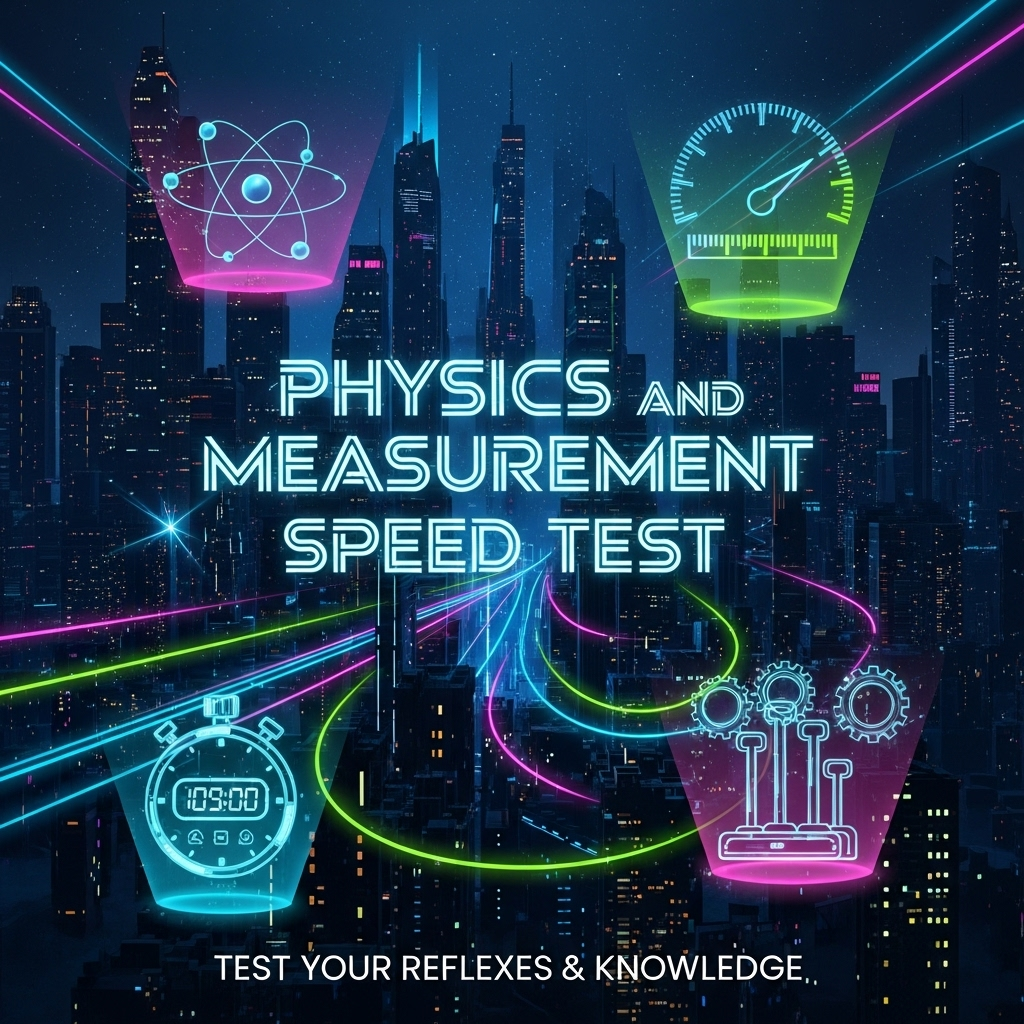Physics Measurements Mastery - Interactive Quiz & Cheatsheet
Boost your understanding of physics measurements with this engaging quiz and quick-reference guide tailored for exam success
Updated: 3 months ago
Categories: Mini Game, Physics, Class 11, Measurements, Units and Dimensions

Physics and Measurement Cheatsheet
Key Concepts
- Units of Measurement: Standard quantities used to express physical properties, e.g., meter (m) for length, kilogram (kg) for mass.
- System of Units: A set of units used consistently, e.g., CGS (centimeter-gram-second) and MKS (meter-kilogram-second).
- SI Units: International System of Units with seven base units, including meter (m), kilogram (kg), second (s).
- Fundamental Units: Base units independent of others, e.g., length, mass, time.
- Derived Units: Units derived from fundamental units, e.g., velocity (\( \frac{m}{s} \)), force (\( N = kg \cdot \frac{m}{s^2} \)).
- Least Count: Smallest division measurable by an instrument, e.g., 0.1 cm for a ruler.
- Significant Figures: Digits in a number that contribute to its precision, e.g., 5.03 has three significant figures.
- Errors in Measurement: Types include systematic (consistent bias) and random (unpredictable) errors.
- Dimensions: Express physical quantities in terms of fundamental units, e.g., velocity is \( [L T^{-1}] \).
- Dimensional Analysis: Technique to check equations or derive relationships using dimensions.
Quick Reference Table
| Concept | Description | Example |
|---|---|---|
| SI Base Units | Fundamental units of measurement | Length: meter (m), Mass: kilogram (kg) |
| Derived Units | Units derived from base units | Force: \( N = kg \cdot \frac{m}{s^2} \) |
| Least Count | Smallest measurable division | Vernier caliper: 0.01 cm |
| Significant Figures | Digits contributing to precision | 12.30 has 4 significant figures |
| Dimensional Analysis | Check equation consistency | Velocity: \( [L T^{-1}] \) |
Advice
Understand Units: Memorize SI base units and their symbols for quick recall.
Practice Significant Figures: Apply rules for addition, multiplication, and rounding.
Error Analysis: Identify sources of errors in experiments to improve accuracy.
Use Dimensional Analysis: Verify equations by ensuring dimensional consistency.
Check Precision: Always use the least count of instruments for accurate measurements.
Physics and Measurement Quick Tips
- SI Units: Always use SI units unless specified otherwise for consistency.
- Significant Figures: In calculations, maintain the least number of significant figures from inputs.
- Least Count: Check the instrument’s least count before measuring to ensure precision.
- Error Reduction: Minimize systematic errors by calibrating instruments.
- Dimensional Analysis: Use to derive formulas or check correctness of physical equations.
Physics and Measurement Speed Quiz
Test your knowledge with 5 physics and measurement questions! You have 30 seconds per question.
Question: 1/5
Time left: 30s
Quiz Complete!
Your Score: 0/5

Group Discussions
No forum posts available.


